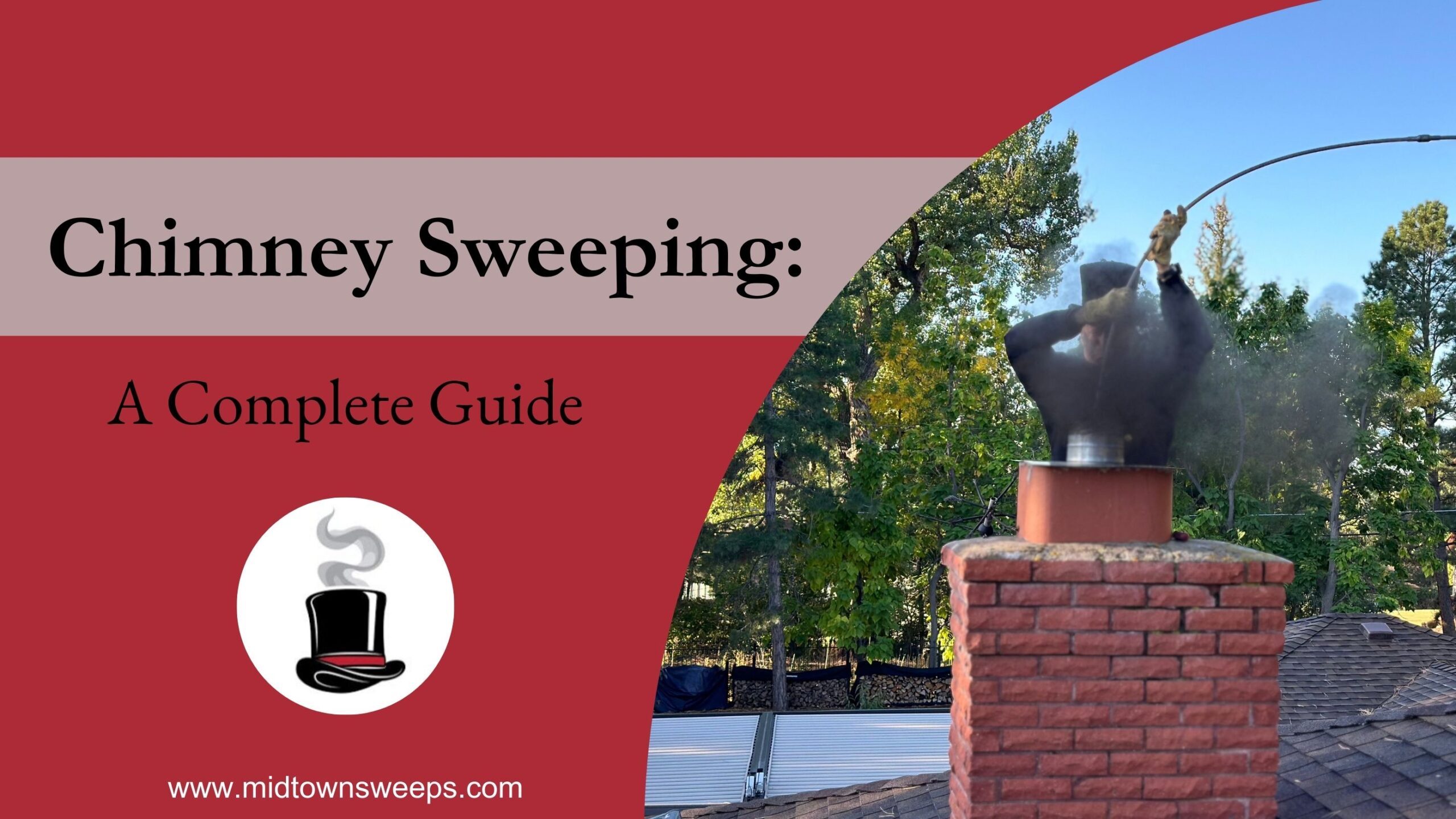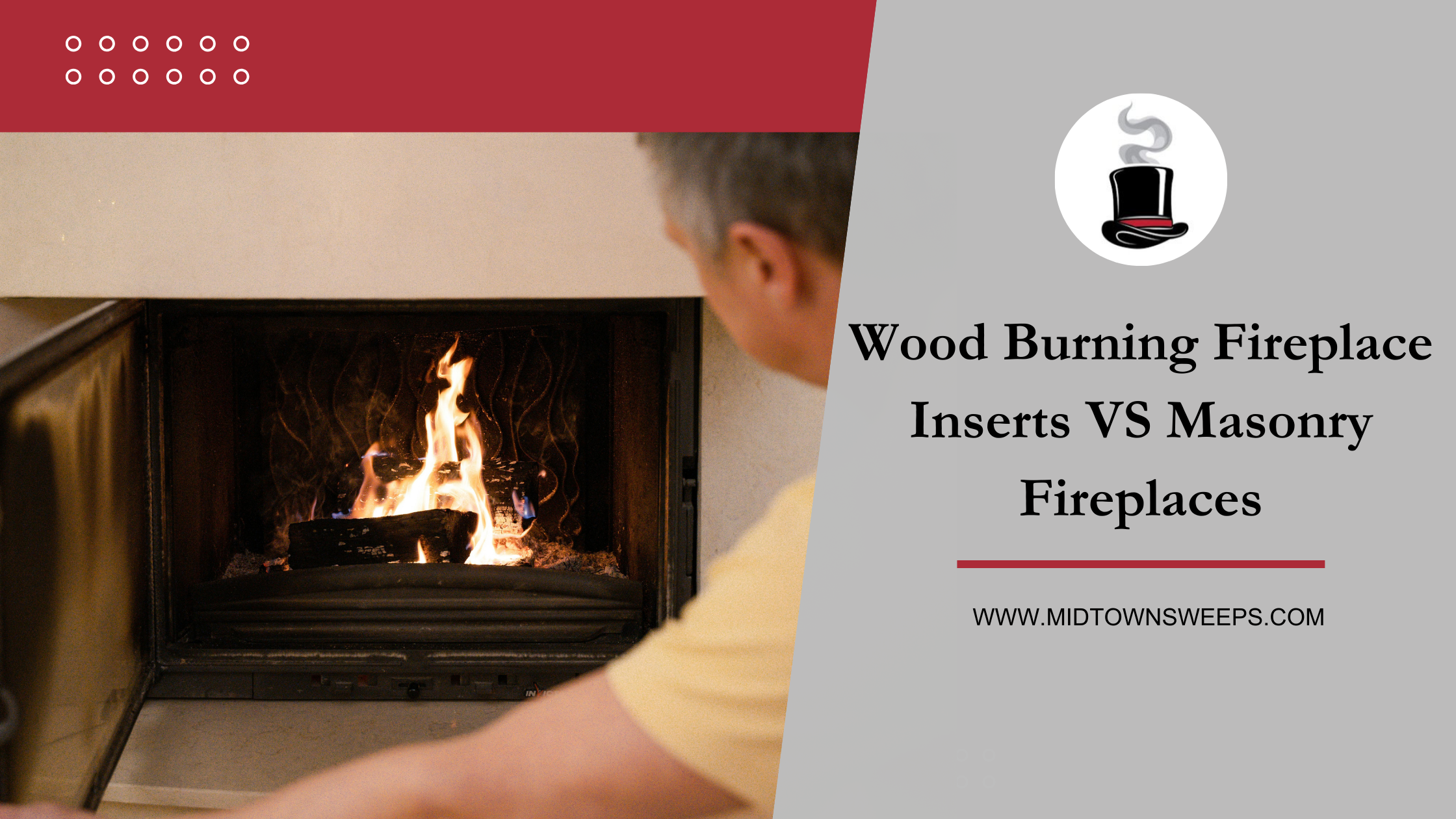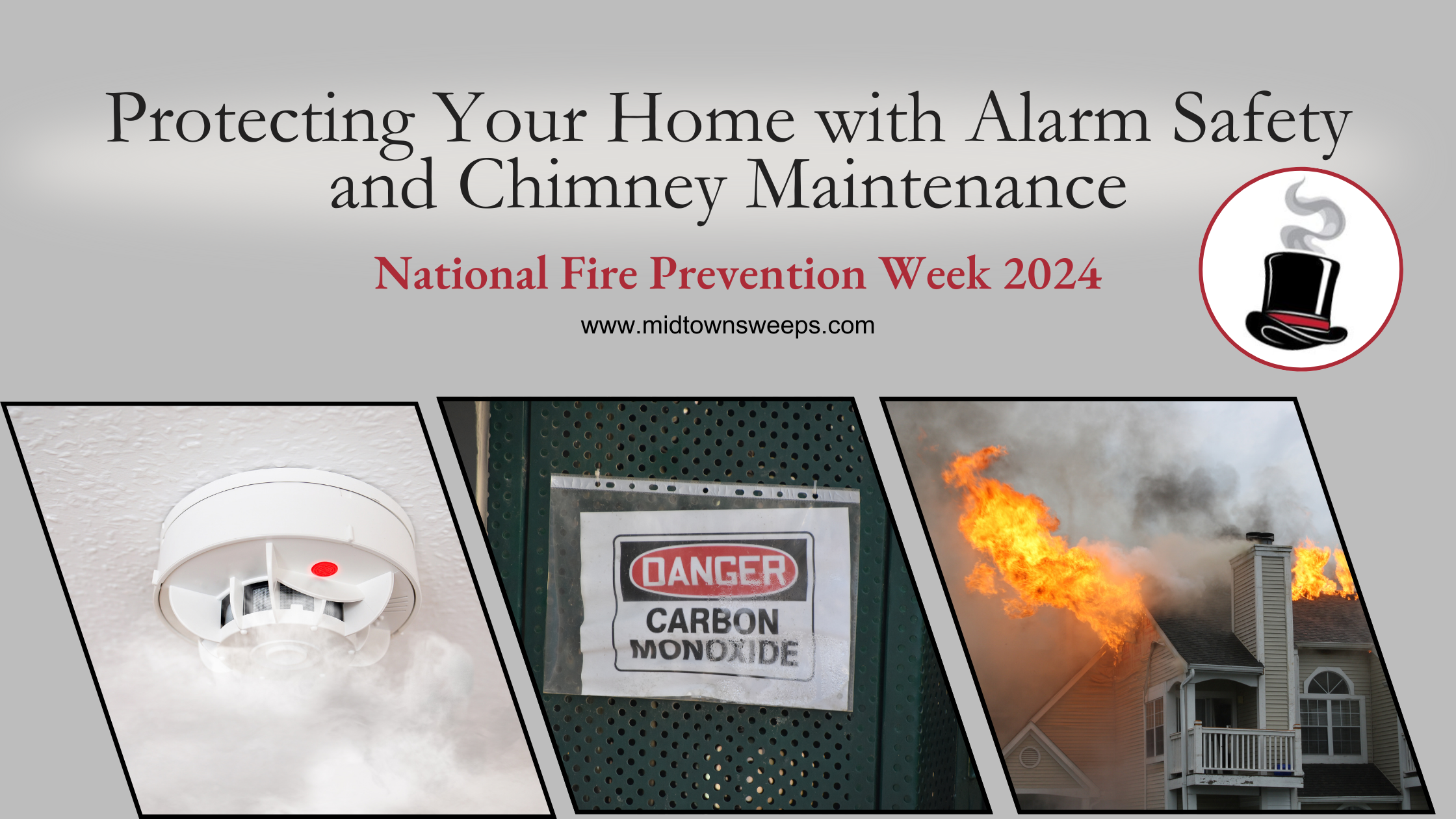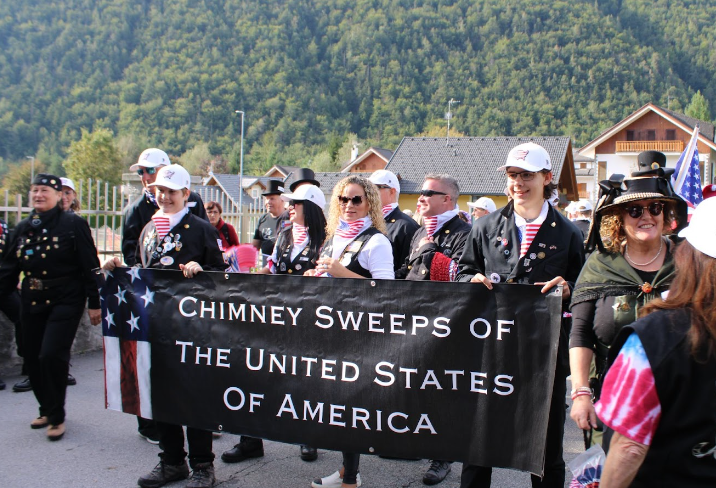Introduction to Chimney Sweeping
Chimneys have been an essential part of home heating systems for centuries, providing a means to safely vent smoke and gases from wood-burning, coal, or gas fireplaces. Over time, the process of cleaning these chimneys—known as chimney sweeping—has evolved from a hazardous trade into a refined, professional service that is vital for safe, efficient fireplace operation. This chimney sweeping guide will take you through the history of chimney sweeping, the innovations that have transformed it, and the importance of regular chimney maintenance and how much modern chimney sweeping costs. We’ll also discuss the risks of neglecting this critical upkeep and explain why hiring a professional chimney sweep can provide safety and peace of mind.
The Origins of Chimney Sweeping
Early History and the Need for Chimney Sweeping
Chimney sweeping dates back to the 16th century, around the time when fireplaces became common in European homes. With this new form of indoor heating, it quickly became clear that chimneys needed regular cleaning to prevent dangerous blockages. Soot, ash, and creosote—a tar-like byproduct of wood combustion—would accumulate within chimneys, creating fire hazards and obstructing airflow. This buildup could lead to smoke-filled rooms or worse, chimney fires that could consume entire homes. Thus, the trade of chimney sweeping was born as an essential service for both safety and efficiency.

The Lives of Early Chimney Sweeps
Chimney sweeping in its earliest form was often grueling, especially for children who were employed to clean narrow chimneys. These “climbing boys” would navigate tight spaces without modern tools, relying on basic brushes and their small size. Conditions were so dangerous that legislation was eventually passed to protect them. The Chimney Sweepers Act of 1834 in the UK, for instance, prohibited the use of child labor in the industry, marking a shift toward safer, more humane practices.
How Chimney Sweeping Changed Over Centuries
The Industrial Revolution brought significant advancements, including improved tools and protective gear, which made chimney sweeping safer and more efficient. This era also saw the advent of standardized cleaning processes and regulations aimed at ensuring safer, cleaner chimneys. As urban populations grew, so did the demand for professional chimney sweeps, leading to the establishment of organizations and guilds dedicated to the craft.
Modern Chimney Sweeping: Tools, Techniques, and Standards
Technological Advancements and Tools in Chimney Sweeping
Modern chimney sweeps use specialized tools to safely and effectively clean chimneys. Flexible, rotary brushes make it possible to clean even the most complex chimney designs, while high-powered vacuums with HEPA filters capture soot and debris, preventing it from entering the home. Additionally, camera inspection systems allow sweeps to examine the interior of chimneys, identifying hidden problems that may need further attention. These technologies ensure a thorough and efficient cleaning process.
The Importance of Certification and Training
Today, many professional chimney sweeps are certified by organizations like the National Chimney Sweep Guild (NCSG). These certifications require comprehensive training in chimney anatomy, safety protocols, and fire prevention standards. Certified sweeps must pass exams and stay updated on industry standards, ensuring they can handle all aspects of chimney care, from cleaning and inspection to repair and maintenance.
The Importance of Chimney Sweeping: Benefits and Risks
Fire Prevention and Creosote Management
Creosote is a sticky, tar-like byproduct of wood combustion that accumulates on the chimney’s inner walls. As it builds up, creosote becomes highly flammable, making it one of the primary causes of chimney fires. Regular sweeping removes this substance, reducing the likelihood of fires and making it easier for the chimney to vent smoke and gases safely. In some cases, chimneys can experience three distinct stages of creosote buildup, with each stage becoming progressively more difficult and costly to remove.
Avoiding Carbon Monoxide and Other Hazards
Chimneys that go uncleaned may also become blocked with debris or bird nests, reducing airflow and increasing the risk of carbon monoxide exposure. Carbon monoxide is a colorless, odorless gas that can be lethal in high concentrations. Routine chimney maintenance ensures blockages are removed, allowing for proper ventilation and minimizing the risk of toxic buildup within the home.

Energy Efficiency and Cost Savings
A clean chimney allows for better airflow, which leads to more efficient combustion and improved heating performance. Clean chimneys also reduce the strain on heating appliances, potentially lowering fuel costs and extending the lifespan of your heating system. Regular chimney maintenance helps prevent expensive repairs by catching issues early, ultimately saving homeowners money.
Understanding the Chimney Sweeping Process
Inspection: Assessing Chimney Health
The chimney sweeping process begins with a thorough inspection to assess the chimney’s overall condition. The inspector checks for creosote buildup, soot deposits, obstructions, and structural integrity. Chimney inspections are typically categorized into three levels:
- Level 1 Inspection: A basic check for routine maintenance, ideal if no changes have been made to the chimney.
- Level 2 Inspection: A more detailed examination using video equipment, often required during real estate transactions or after a chimney incident.
- Level 3 Inspection: The most extensive inspection, which may involve removing certain parts of the structure to check for hidden issues.
The Sweeping Process: Ensuring a Thorough Clean
After the inspection, the chimney sweep begins the cleaning process. Sweeps use rotary brushes to scrub away creosote, soot, and other debris from the chimney walls. High-efficiency vacuums are placed at the base of the chimney to contain and remove loosened particles, keeping the area clean. Depending on the chimney’s condition, the sweep may also address blockages or make minor repairs to damaged sections.
Final Review and Recommendations
Once the cleaning is complete, a final review is conducted. The sweep inspects the chimney to ensure it is free from obstructions, creosote, and other hazards. Any additional issues identified are typically documented, and homeowners are advised on maintenance tips and recommended schedules for future inspections and cleanings.
Why Hiring a Professional Chimney Sweep is Essential
The Complex Nature of Chimney Systems
Chimneys may appear straightforward, but they have several critical components—such as the flue, smoke chamber, and damper—that need to work in harmony. A professional chimney sweep understands this complexity and can spot hidden problems, such as improper draft or structural issues, which may compromise the system’s efficiency or safety.
The Risks of DIY Chimney Sweeping
While DIY chimney cleaning kits are available, chimney sweeping is best left to professionals for several reasons. Without the right tools or experience, homeowners may inadvertently damage the chimney structure or fail to remove hazardous creosote deposits. Professionals are trained to handle these tasks safely and thoroughly, reducing risks and ensuring that the chimney remains in top condition.
The Value of Professional Standards and Certifications
Certified chimney sweeps adhere to strict industry standards for safety and efficiency. They know how to handle and dispose of creosote safely, perform accurate inspections, and can recommend necessary repairs. By hiring a certified professional, homeowners gain peace of mind that their chimney has been properly maintained by someone with verified expertise.
Liability and Insurance Protection
Professional sweeps carry insurance that protects both the homeowner and the technician. If any issues or accidents arise during the cleaning process, insurance provides a safety net, ensuring that any damage can be covered. This protection adds an extra layer of security that DIY cleaning cannot offer.

How Much Does a Chimney Sweep Cost?
The cost of a professional chimney sweep typically varies based on location, chimney type, and service level. Here’s a general breakdown:
Average Cost of a Chimney Sweep
- Basic Chimney Sweep: On average, a routine chimney sweep costs between $200 and $300.
- Complex Sweeps or Additional Services: If the sweep includes a deeper inspection, such as a Level 2 inspection with a video scan, or if the chimney has a complex structure, costs can increase up to $500.
- Repairs or Specialized Cleaning: If damage or heavy creosote buildup requires repairs or more extensive work, costs could reach $500 or more.
Factors Affecting Chimney Sweep Cost
- Location: Rates vary across regions, with urban areas generally charging more than rural ones.
- Chimney Condition: If a chimney is heavily sooted or has a high level of creosote, it will require more time and effort to clean.
- Inspection Level: A basic Level 1 inspection costs less than Level 2 (video inspection) or Level 3.
- Chimney Complexity: Multi-flue chimneys or those with unique features can increase the cost.
How Long Does a Chimney Sweep Take?
The chimney sweep process can generally takes 45 minutes to 1.5 hours for a single chimney:
- Routine Cleaning: A standard cleaning typically takes about an hour.
- Inspection with Video Scan: If a Level 2 inspection is added, expect 1.5 to 2 hours.
- Extensive Cleaning or Repairs: More involved work can take 2 to 4 hours or longer, depending on the chimney’s condition and required repairs.
Annual chimney sweeps are recommended, and regular cleaning not only keeps costs down but also reduces the time required for each service!
Prioritizing Safe, Reliable Chimney Maintenance
Regular chimney sweeping is a crucial aspect of home safety and maintenance, helping to prevent fires, improve air quality, and reduce heating costs. By understanding this chimney sweep guide, the history, modern advancements, and benefits of chimney sweeping, homeowners can make informed decisions about their chimney care. Annual or seasonal inspections and sweeps from a certified professional provide the best assurance that your chimney is operating safely and efficiently and keeps costs down. Take action today to ensure your chimney is well-maintained, allowing you to enjoy warmth and safety throughout every season.












